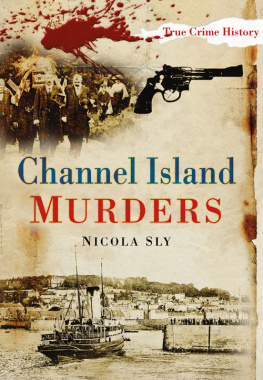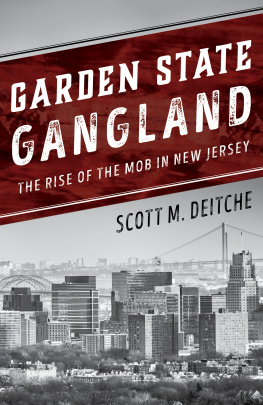Copyright Notice
Copyright 2017 LA PROVENCE
All Rights Reserved
You are not authorized to reproduce this title in any format and for any purpose. This title is published under Copyright protected terms and condition, of which its distribution and sales is strictly limited to the assigned Distributor/s and the Marketplace involved. You can only obtain a copy through legal source, and not to be tempered with any modification to it. Your understanding and compliance is appreciated.
First Printing: 2017.
Printed in the U.S.A
Publisher by LA PROVENCE PRINT .
17 rue du Marchal Foch CEDEX 1 Roubaix France.
Main defences and defenders
Mont Orgueil
Mont Orgueil is located overlooking the harbour of Gorey. It is also called Gorey Castle and l Vir Cht (the Old Castle) by Jrriais speakers.
Origins of names
The promontory on which the castle is built was referred to as Gorroic in 1180 by the writer of the Great Roll of the Norman Exchequer while a century later the Extente of 1274 refers to it as Gorryk . The more familiar name of Gorey first appears in the 1330s when French manuscripts refer to the site as Gorri , Gurri and sometimes as Chteau de Gouray . For most of the medieval period the castle was simply referred to as Gorey or the Kings Castle it seems to have acquired the name Mont Orgueil (Mount Pride) in the early 15th century, traditionally from Thomas, the Duke of Clarence, a brother of Henry V, although the first written reference dates from the French occupation of the castle in 1462. Once Elizabeth Castle had been built in the 1590s, it was simply referred to as le vieux chteau .
Work starts
The castle is built on a rocky promontory facing the coast of Normandy and overlooking the Bay of Grouville. There are steep slopes and high cliffs on three sides giving an almost impregnable position. In 1204, King Philip of France took Normandy back but King John of England kept the administration of the islands. The Channel Islands became the front line between England and France and work began on Mont Orgueil under the Warden of the Isles, Hasculf du Suligny .
The site chosen had been used as a defensive place since the Iron Age and possibly as early as the Neolithic period. The earth rampart and ditch would have been degraded but would have provided a good start for the new fortress which was built on the rocky ridge. The shape of the stone buildings was determined by the narrowness of the ridge, with a hall being connected to two square towers by long passageways. Access to the hall was through an enclosed staircase. The area inside the ramparts below was further strengthened in 1224-5 when 1,000 tree trunks were sent to the islands from the New Forest to make palisades for the two new castles. In addition Jersey also received five cartloads of lead, the timber from 20 oak trees and 60 bags of nails to assist with the building.
Historical references
The Close Rolls of Henry III contain many references to arms, shields and coats of mail being shipped to the castle garrison from Southampton and the Tower of London along with mention of cargoes of timber, beams and lead. There are also numerous entries made by the English Treasury for work and repairs carried out in the castle. The castle acquired a circuit of walls and round towers at this time and in the 1250s the bridge of the Kings Castle is repaired.
Castle at war
There were frequent raids from France and the castle was extended and improved throughout the 13th century. The Great Hall and crypt formed the Ancient Keep on the cliff edge at the highest point of the site. To this was added a middle ward enclosed by curtain walls with five round towers on the angles. The lower ward and outer ward had similar walls and towers making it a concentric castle. There were many machicolations where the defenders could drop boulders and pebbles from the beach, burning pitch or boiling water on besiegers.
The castle was the home of the administration and government of Jersey until 1600 and the Governor lived in the keep. Islanders would take refuge when invasions were feared.
John des Roches
In 1327 Sir John des Roches was sent to the Channel Islands to inspect and strengthen defences, and the following year he was appointed Keeper. It was probably during his term of office that Grosnez Castle on the islands northwest corner was built. At Gorey he strengthened the defences and built a large tower to the north of the Keep which was to be known as the Rocheford. When he arrived he found the garrison to be made up of three men-at-arms drawing 12d a day, a constable and his attendant drawing 6d a day, and 30 foot soldiers drawing 2d. This was obviously a time of international tension because a number of Jersey vessels were attacked by the French and their crews killed, and there had been an attack on Guernsey. In his report to the King, des Roches said that the castle had been partly in ruins, under-equipped and the garrison had not been paid. He set out a defence plan in which he said that the best way to defend the island was for the ordinary defence of the island to be left in the hands of the ordinary people - and the castle to be maintained and manned by an English garrison.
Des Roches also refers to repairing damage to the buildings in the castle which had been caused by a great wind. He describes rebuilding the decaying walls and names different parts of the castle the chapel, the pantry, the kitchen, the bakehouse, the prison, houses, turrets and walls. There are also references to roofing the buildings and remaking the bridge. The peacetime garrison is set down as 30 men.
Du Guesclin
During the 14th century there were regular incursions by the French but they did not manage to take Mont Orgueil until Bertrand du Guesclin, Constable of France, invaded in 1373. Some of the French managed to undermine the outer wall and chased the garrison into the keep. Du Guesclin was fearful of reinforcements arriving so he made an agreement with William de Asthorp, in charge of the garrison, that if the English fleet did not arrive in two months, the castle would be surrendered to the French. Luckily the relief force arrived in time and the French retreated rapidly.
astle captured
In 1461 the French invaded again and, this time, took Mont Orgueil. It remained under French rule for seven years and cannons were installed. The French were expelled from the island in 1468 and a new tower guarding the entrance and the moat were built. As more cannons were added, the walls and towers had to be strengthened.
More additions
In the 16th century the Grand Battery was constructed as a protective shield for the keep from cannon fire from the hill opposite. During the next century the Somerset Tower was built with better living accommodation for the Governor and garrison and to provide a gun platform. The round towers were replaced by angled bastions. The improvements were not finished as Elizabeth Is military engineer advised her that the situation of the castle was wrong. Elizabeth Castle was begun in the sea off St Helier. Sir Walter Raleigh, Governor of Jersey in 1600, rejected a plan to demolish the old castle in order to recycle the stone for the new fortifications with the words: twere pity to cast it down.
Prison
The old castle continued to be used as the Islands only prison until the construction of a new one in St Helier at the end of the 17th century. The Crown found it expedient to send troublesome agitators such as William Prynne and John Lilburne to Mont Orgueil far from the realm of England.
A report for the States of Jersey in 1691 declared that the barracks accommodation was so dilapidated that it was impossible to quarter troops there. Two years later, the castle was stated to be in a ruinous condition and subsequently was abandoned as a prison.
Next page










